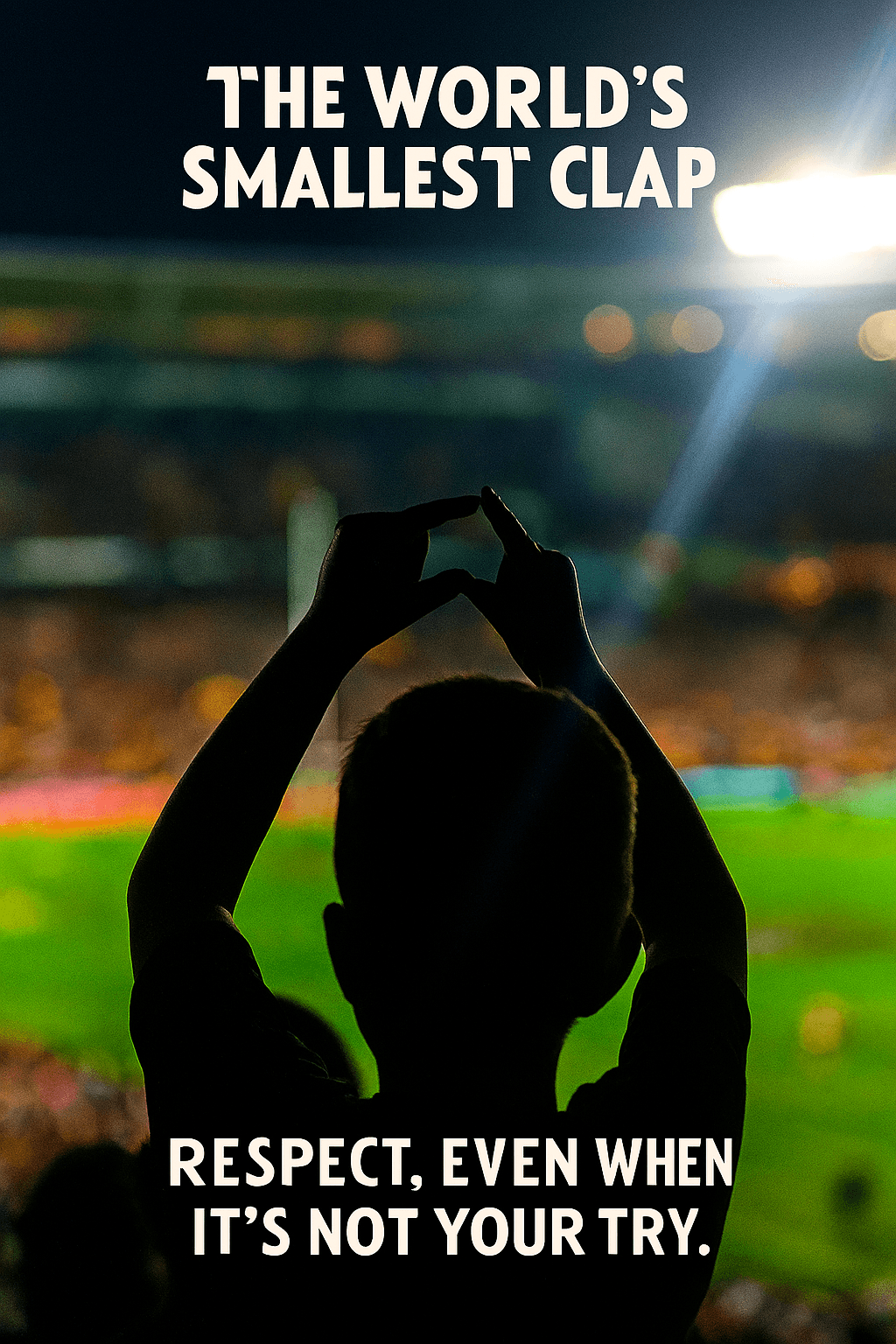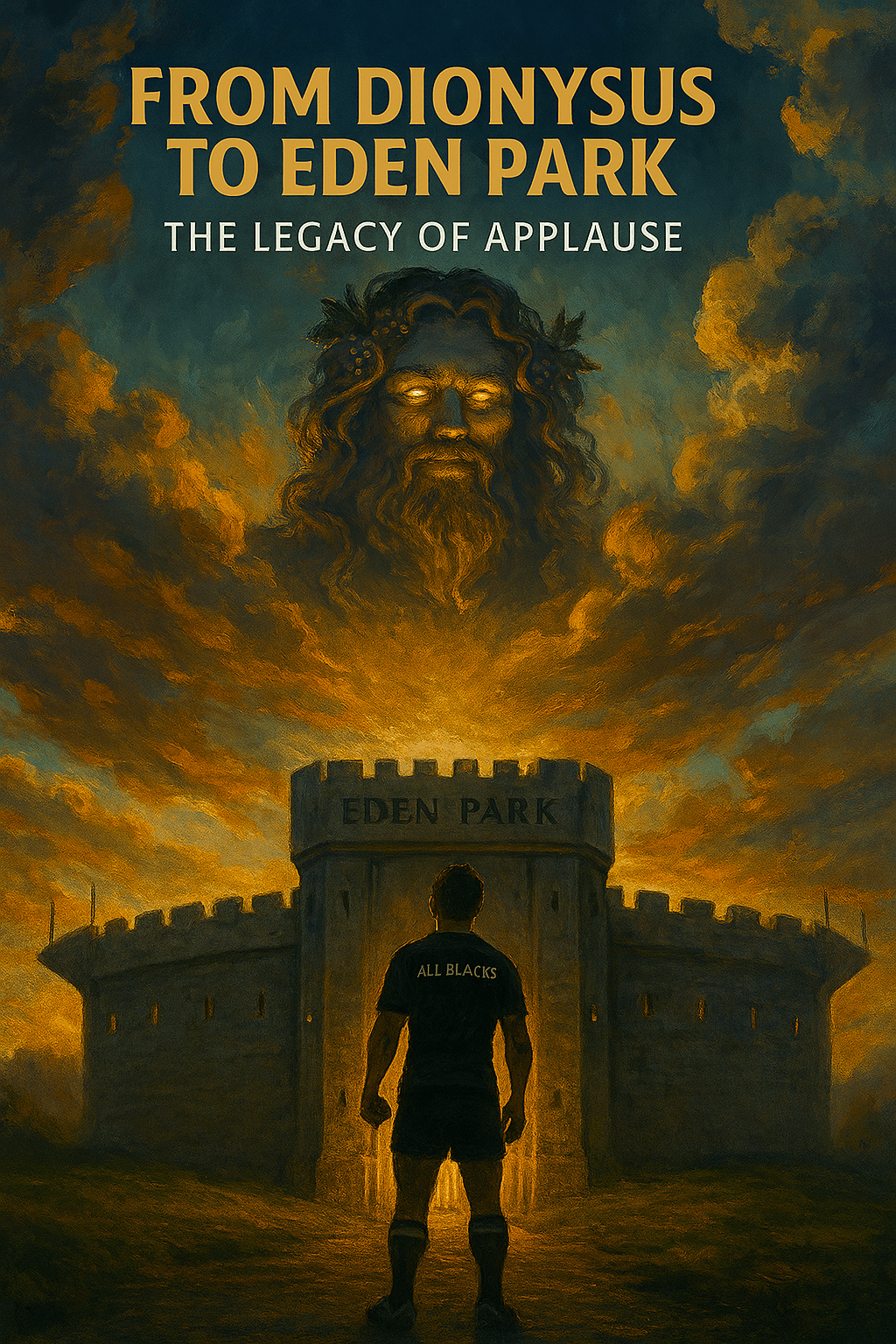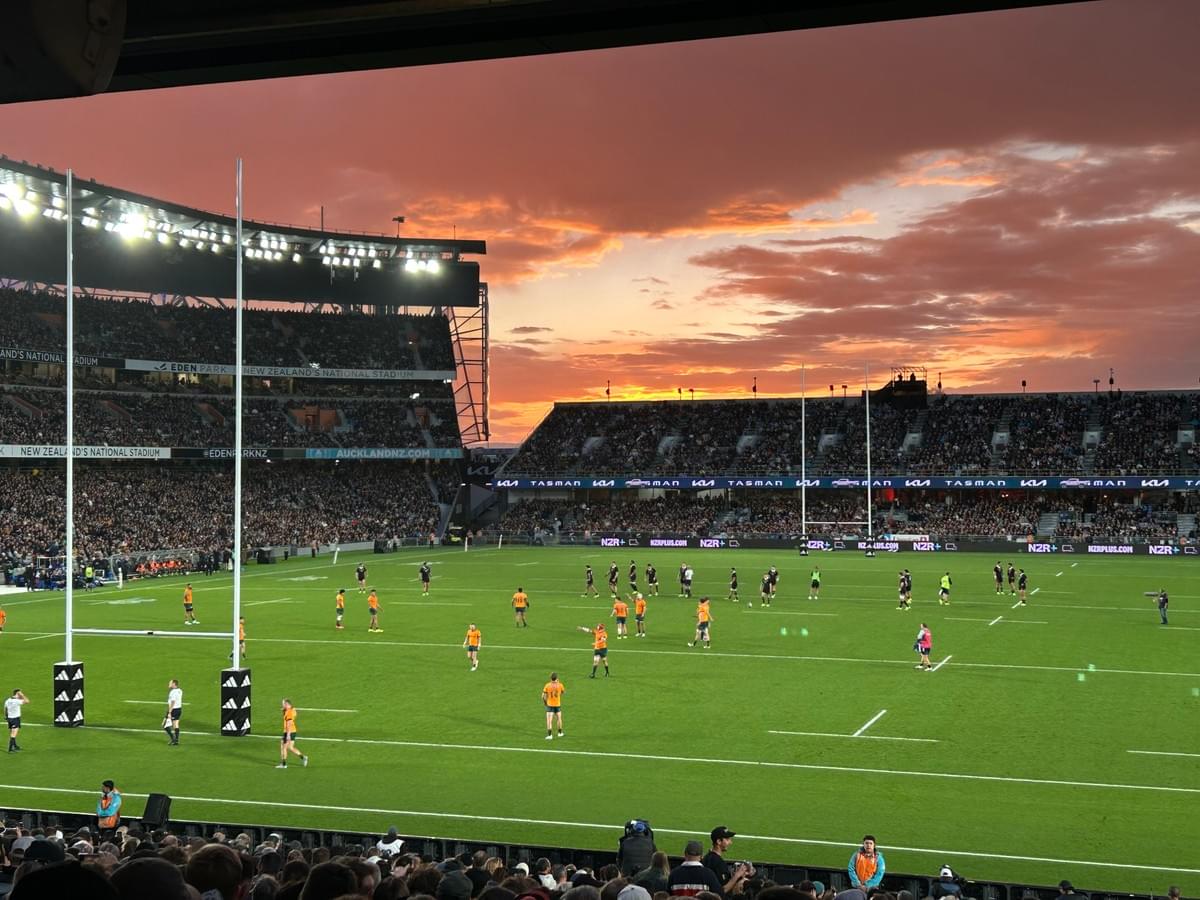Eden Park, a seven-year-old, and the world’s smallest clap. Booing’s out, sportsmanship’s in—and legacy rides the bus. This dispatch rewrites applause with two fingers and a quiet nod.
I took my grandson to his first All Blacks game at Eden Park. The night was stunning—chanting crowds, trophy lifts, and the kind of stadium magic that sticks. He’s a keen league player, but he stood on his seat to catch every bomb kick, trying to decode the action, fascinated with infinite tackles and asking why we caught the bus instead of driving. Legacy sometimes means its better to ride public transport.

When the All Blacks scored, the crowd roared and chanted when encouragement was needed. When Australia scored, they booed. I leaned over and said, “We don’t boo. It’s bad sportsmanship.” He’s only seven, but he’s played sport long enough to know you can’t win Player of the Day every time. He knows how to be proud of his teammates when they win a prize he didn’t get.
And then—he introduced me to the world’s smallest clap. Two index fingers tapping together. A quiet, cheeky acknowledgment of achievement, even when it’s not your team. It reminded me of the world’s smallest violin from SpongeBob—used to mock a lack of sympathy. But this clap? It’s not mockery, its acknowledgment. It’s a refusal to flatten someone else’s moment, even when it’s not the one you wanted.
📜 A Brief History of Booing (and Why We Might Be Done With It)
Booing has ancient roots—first heard in Greek amphitheaters where audiences hissed, howled, and booed to critique bad performances. It was theatrical feedback, not just rudeness. But somewhere between Dionysus and Eden Park, booing lost its backbone and became crowd noise. Maybe it’s time we evolve. The world’s smallest clap—two fingers, one quiet nod—might just be the next chapter. A refusal to flatten, a gesture of grace. Let’s leave booing in the history books and teach our kids to clap with clarity.
I saw a protest on TV against Winston Peters. People have every right to voice their opinions. But booing? That’s not backbone. That’s erosion. You can protest without being rude. You can disagree without dishonoring. You can clap with two fingers and still hold your ground.

🏛️ From Dionysus to Eden Park: The Legacy of Applause
Eden Park is more than a stadium—it’s a fortress of legacy. The All Blacks rarely lose there, and the crowd knows it. But what if the next evolution of sportsmanship isn’t louder chants or sharper jeers—but a mythic nod from the sky? Dionysus, the ancient Greek god of theater and catharsis, once presided over booing crowds in open-air amphitheaters. Now, maybe he watches over Eden Park, challenge accepted by All Blacks and smiling as a young boy claps with two fingers and rewrites the rules.
So when the crowd boos and the scoreboard misbehaves, just remember—two fingers, one clap, and a grin that says:
I'm the star of my own story. Even if it's not my try

